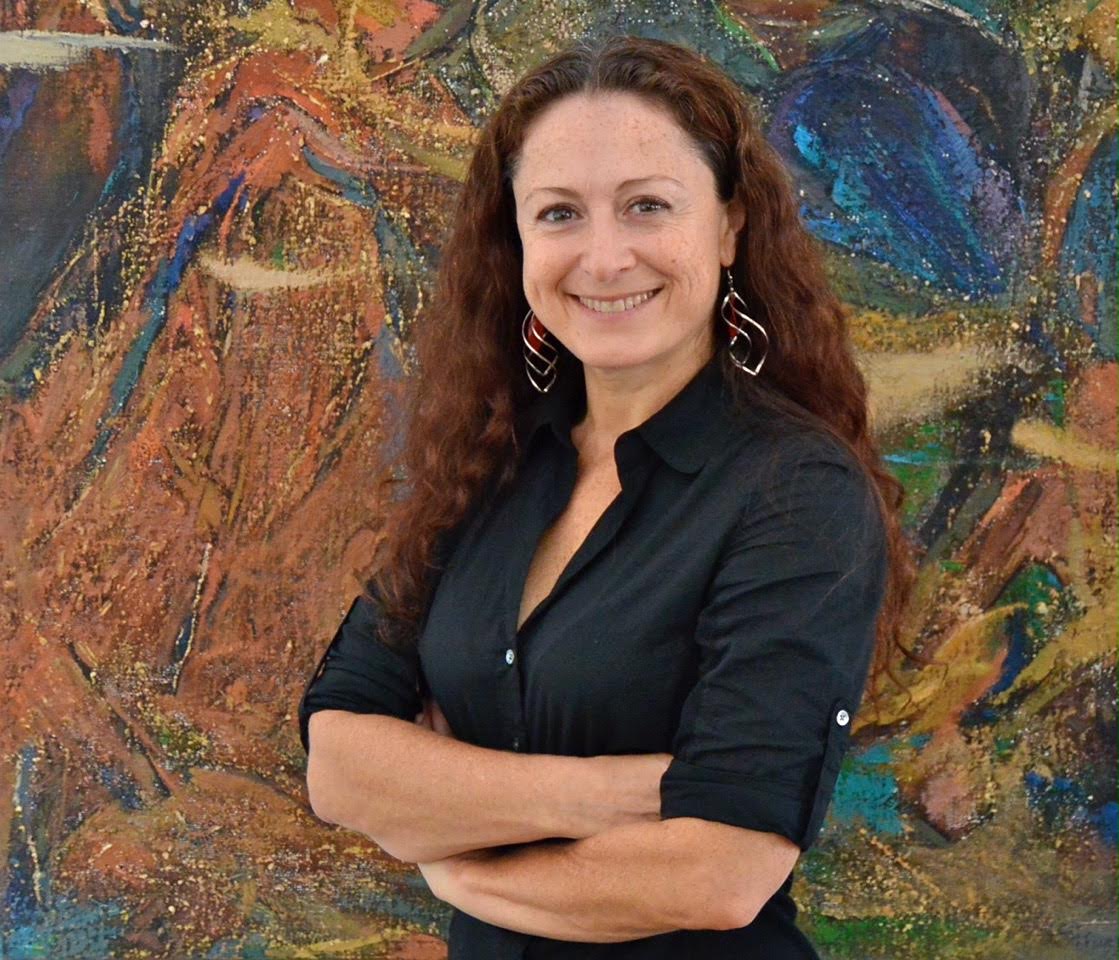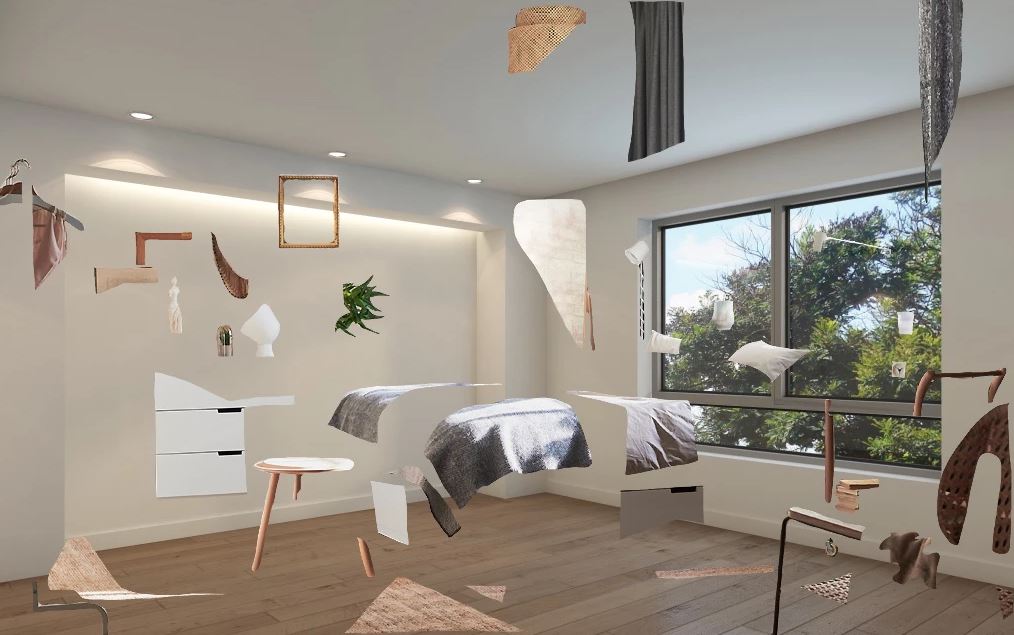Katrine Levin is a respected London art dealer, who showcases exceptional emerging artists within the Western art world. After receiving her Master’s in Art History from Christie’s Education, her stepfather suggested that she visit artists’ studios in Kunming, the capital of China’s Yunnan Province, where he had been raised. Katrine was stunned by the calibre and inventiveness of the art there; on returning to London the concept of representing and showcasing talented artists from places “less discovered” was born. In 2015 Katrine set up Katrine Levin Galleries to give a voice in the West to talented artists from the Yunnan Province and other places less discovered, both in and outside of China. In this interview, she talks about her own journey into the commercial art world, as well as what it takes to make it as an art dealer.
How did you first get into the art world? I know you didn’t start out in galleries….
You’re right. I practiced intellectual property law in NYC and London for over 15 years, starting in a law firm, progressing to general counsel of a mid-size multimedia company, and finally running my own law business. But I’ve always been interested in art, and a moment came when I thought ok, it’s now or never. So I took the plunge. I suspended my private practice and enrolled in Christie’s Education in London, getting an MLitt in their “Renaissance to Modern” art history programme (which sadly has been discontinued as of next year, as part of a restructuring effort). One of my concerns when I enrolled was that it would be one of those courses for “bored housewives”. Instead, it kicked my behind. It was the most invigorating, tough programme I have ever done – and I loved every minute of it!
Did your Masters degree at Christie’s help you to secure a job in the art world? What was the most important thing you learnt whilst there?
I’ll begin with the second part of the question – everything. The Christie’s programme gave me a breadth and depth of education that to this day allows me to draw connections and see influences where I saw none before. It literally taught me to perceive things more fully, and make my own conclusions. And it gave me a thorough understanding of the curation and business of art from various perspectives – museums, cultural heritage management, auction houses, galleries. It was an incredible, immersive experience.
The Master’s from Christie’s Ed has definitely helped me in the art world, both in terms of knowledge and support. I was fortunate to study under incredible professors, some of whom are now good friends and all of whom have been very supportive of my endeavours. The alumni organisation is great at staying in touch and helping with promotion. Also, and this is by far not unique to Christie’s Ed, I have made close friends and “partners in art” during my studies, and their advice and moral support as I started the gallery has been invaluable.
I knew that I wanted to start something on my own, so I was looking for experience rather than a full-time job. Christie’s helped me secure work experience at Christie’s King Street, in the Old Masters Paintings and Islamic Art departments – a great learning opportunity and a magical experience (imagine helping to catalogue the treasures in Christie’s OMP and Islamic warehouses, while the leading experts in the field tell you about them!). Also through Christie’s Ed, I helped with the organisation of the Haughton Arts and Antiques Fair in London and their International Show in New York, which was a valuable learning experience in the operation and promotion of a large-scale fair.
“A moment came when I thought OK, it’s now or never. So I took the plunge. I suspended my private practice and enrolled in Christie’s Education in London, getting an MLitt in their Renaissance to Modern art history programme. One of my concerns when I enrolled was that it would be one of those courses for “bored housewives”. Instead, it kicked my behind. It was the most invigorating, tough programme I have ever done – and I loved every minute of it!”.

How did you go about setting up Katrine Levin Galleries? Was this difficult?
The idea of setting up the Galleries happened almost by chance. After I graduated from Christie’s my step-father, who is Chinese, thought I should put my newfound skills to good use and suggested that I visit artists’ studios in Kunming, the city where he grew up and the capital of China’s beautiful Yunnan Province. I was stunned by the calibre of art and inventiveness that I saw there. This was a unique opportunity not least because – especially in a fairly remote province such as Yunnan – being introduced by a local opened doors otherwise closed to a Westerner. It also created a circle of trust that lies at the heart of my dealership and that allowed me to sign three very different artists whose work blew me away: Chen Li (whose exhibition will run from 18th June – 1 July 2017), and Gao Xiang and Wu Jun (whose joint exhibition is coming up in November).
Shortly after the trip to China, I found myself in Croatia and Georgia, and in both countries I “discovered” artists whose works floored me – and who were unknown in the mainstream West. This is how the concept of representing and showcasing talented artists from places “less discovered” – both in and out of China – was born.
Once I formulated the concept, setting up the Galleries was straightforward. I did not want to pay for a permanent gallery space, so I decided on the format of an online gallery with regular pop-up exhibitions. I set up the website and I formulated a tag line – amazing how something so short takes such a long time. Thus far, I have not incorporated the Galleries – although I may incorporate it as the business grows larger.
Based on a friend’s advice, I spent a few very worthwhile hours with a wonderful PR practitioner who taught me how to present myself and my business in the art field. This doesn’t mean giving up your individuality, but simply learning to “talk the talk” before putting your accent on it.
Next came research into areas in London most suitable to the type and price point of the art I’m showcasing, and galleries within my price range whose space is most suitable (I need high ceilings for best effect). I found the wonderful Coningsby Art gallery, which is now my hub in London. So, setting up was easy. The hard part was putting myself – my judgement, abilities, money – out there, and committing to a first exhibition.
What does a typical day look like? What is the best part of your job?
The day begins with figuring out a good Twitter and Instagram post. Other than that, there is no really typical day, which is part of the appeal for me. Depending on which stage I am at of the pop-up exhibition process, the day can consist of writing about the works, figuring out the physical hang, stretching and framing, figuring out advertising and design, reading up on current events in the art world, and marketing – always marketing. Marketing is the other constant – both as a frequent activity and as a daily thought process – how can I get more eyes on these works, how can I reach more people, make more contacts in the field, best to explain and present the artworks.
The best part of my job is travelling to artists’ studios, looking at and writing about the artworks, and interacting with the artists, as well as meeting truly interesting people as part of my marketing efforts.

How does a commercial gallery interact with the rest of the art world e.g. museums, auction houses and art consultants?
This very much depends on the size and reputation of the commercial gallery. I think a healthy relationship with all three is vital to promoting the reputation of a contemporary artist, but it takes time and effort to grow the trust level, especially when it comes to museums and art consultants.
While a lot of women work as Gallery Assistants, there are fewer women than men working as Gallery Directors. What are your thoughts on this?
I think that needs to change. I have not personally experienced a bias in the arts field, which is not to say there isn’t one. On the other hand, the new Director of Tate Modern, as well as the Director and Managing Director of the Tate organisation are women, which is encouraging. Both in the legal field and in the arts field, I have never perceived myself as a “gender” while at work. I have simply perceived of myself as a professional who has certain insight into a specific issue. I think this attitude was subconsciously picked up by those around me because even in the very male-dominated world of patent law I have never felt that my opinion was in any way “genderised”. I know that other people have hit “ceilings” and had completely different experiences. But in my experience I found it a useful attitude to have.
What advice would you give graduates looking for jobs in the commercial art world?
Follow your heart. This is not the kind of work that will make you rich overnight, and it requires a lot of effort, both time-wise and emotionally. And as you’re putting in that effort, at some point you’ll need to dig deep and remind yourself why you’re doing it. At the same time, as you’re starting out, don’t be afraid to experiment. Sometimes an opportunity comes from a place where you’re least looking and you won’t know if it’s the right one for you until you try. As to how to land your dream job? Don’t be shy and don’t give up!
What is your favourite work of art that you have worked with and why?
This one is hard to answer because I have so many, and I’m constantly coming across new ones. One of my favourite works by Chen Li is “Evening Autumn Clouds” because it completely transforms in different light, it’s like having a thousand paintings in one.
To discover more about Katrine Levin Galleries and the artists represented, please visit www.katrinelevin.com/ – you can also follow Katrine on Twitter @KatrineArtSpeak


